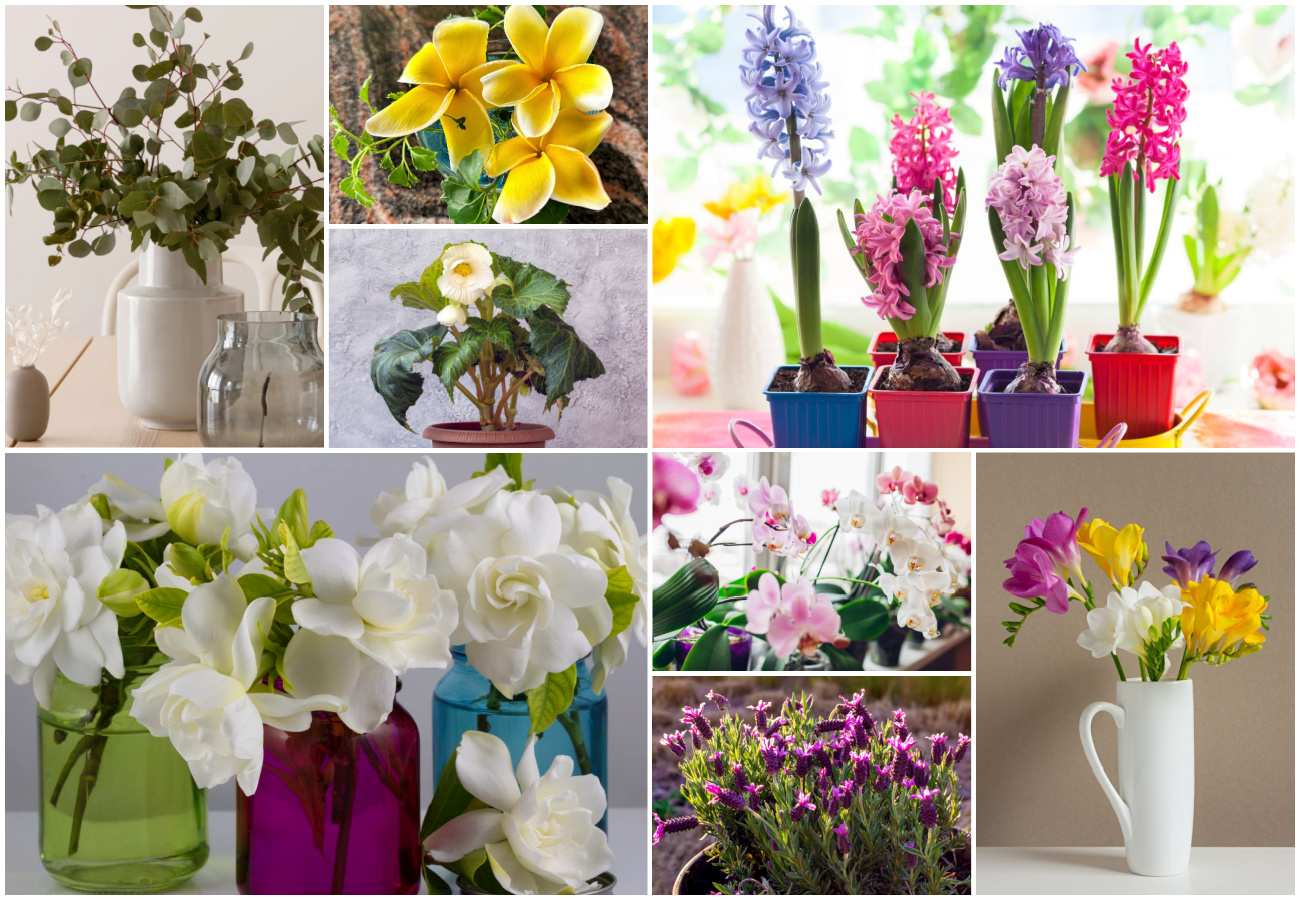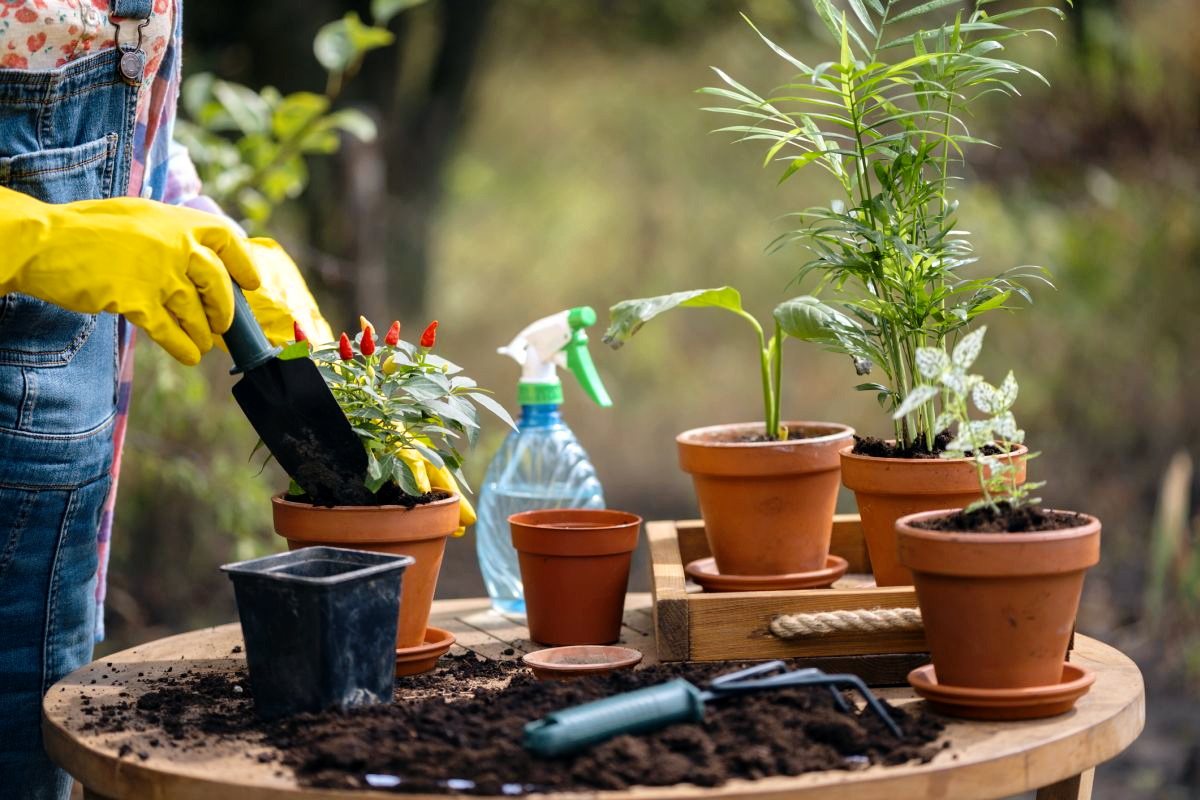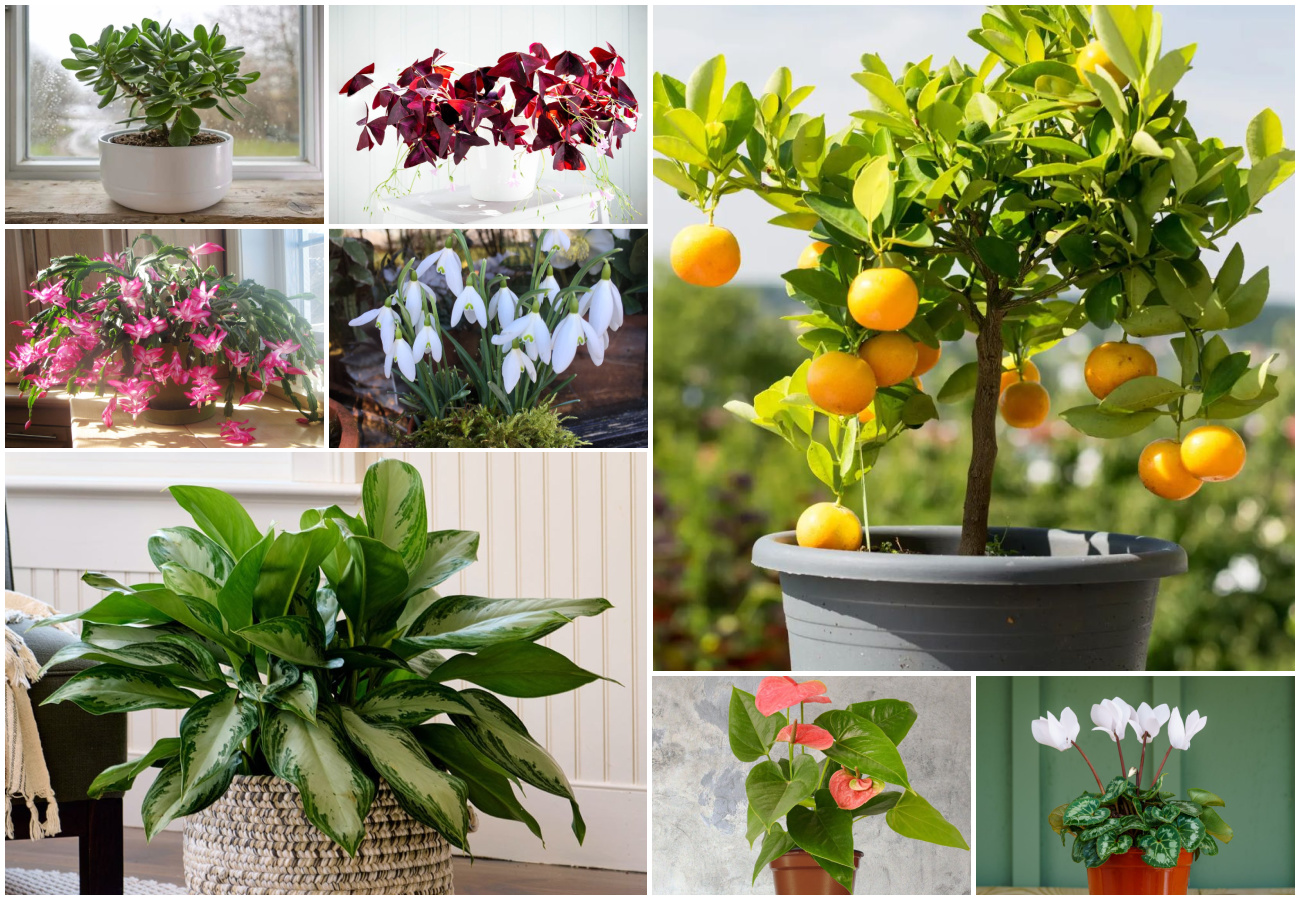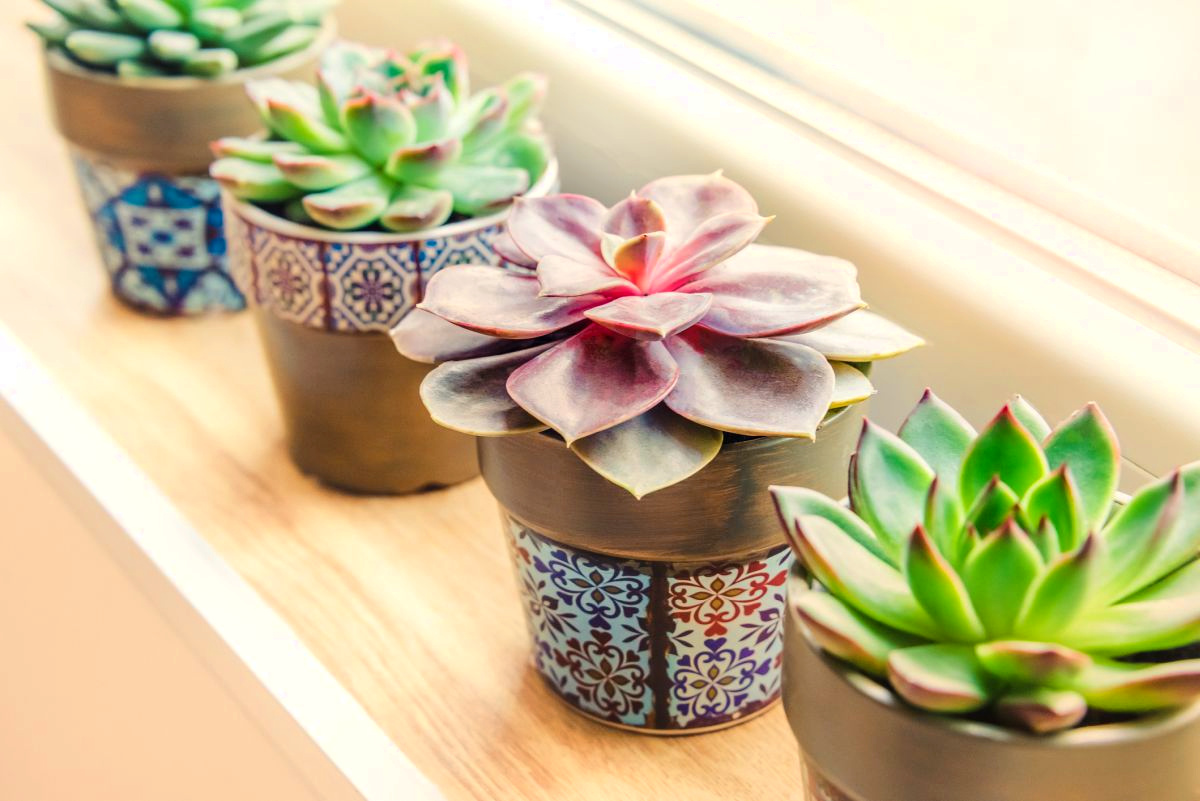Thyme is an aromatic and tasty Mediterranean herb that has a wide range of uses. Like several other herbs from the Mediterranean region, it is easy to grow not only in a garden outdoors but also inside your home.
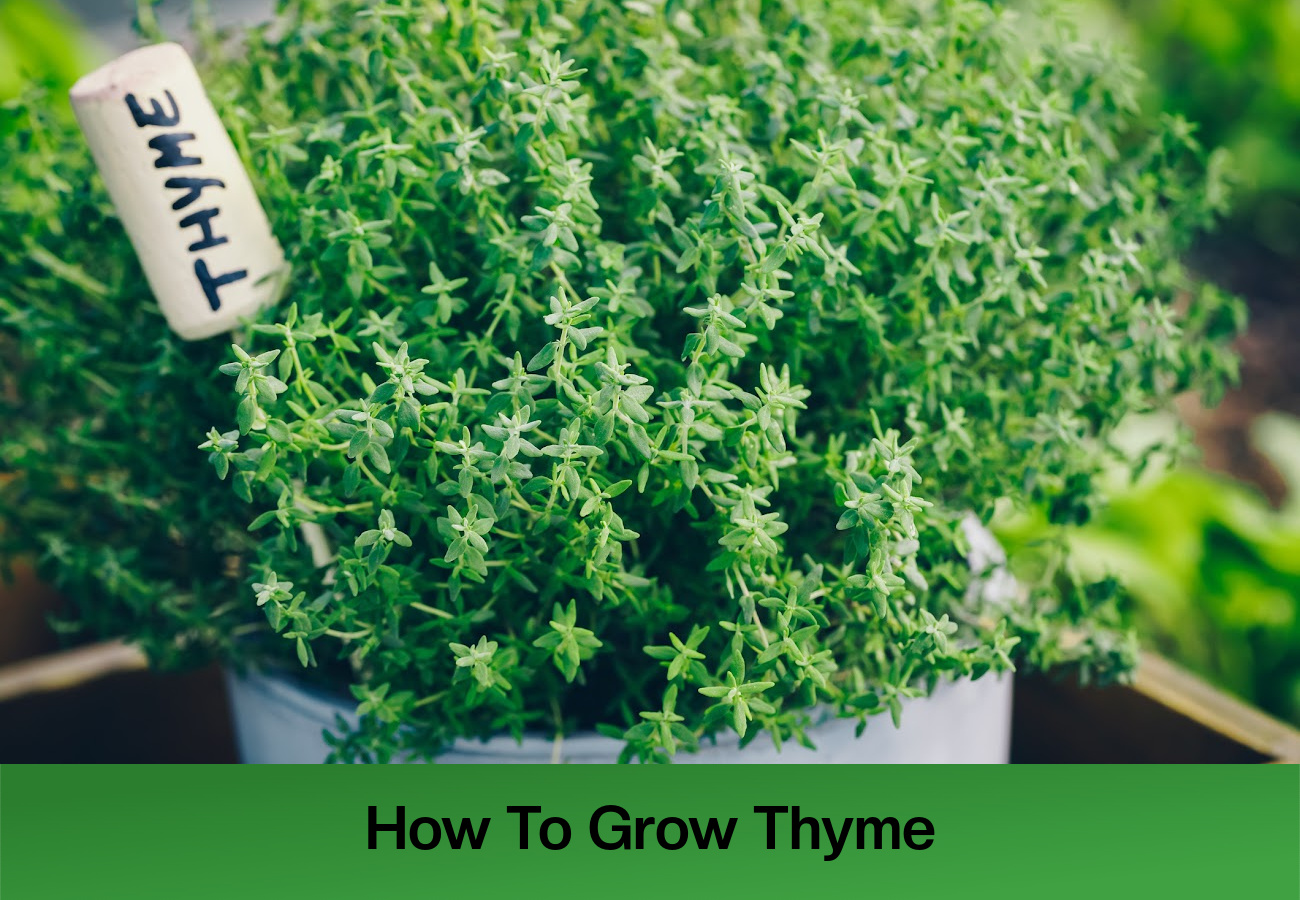
To grow thyme indoors successfully, you need to think about:
- Where to grow thyme indoors.
- The best container and growing medium to use.
- Which thyme variety or varieties to grow.
- How to care for thyme indoors.
- And how to harvest thyme from your indoor garden.
Choosing the Best Location to Grow Thyme Indoors
Thyme can grow indoors, but the main challenge when doing so is a lack of light. This is a sun-loving herb that grows naturally on sun-kissed hill slopes in the Mediterranean region. Indoors, it can cope on a sunny windowsill but needs at least 6-8 hours of sunshine each day.
If your home is on the dimmer side, you live in a northern location, or you want to keep thyme growing over the winter months, grow lights will often be required to give thyme the light it needs.
Thyme will enjoy warmer temperatures, ideally between around 15 and 27 degrees. Make sure you do not place it, however, in a spot where temperatures fluctuate too much. Do not place your time too close to a heat source, or in chilly draughts.
And it is also important to remember that thyme comes from an arid climate zone, so it does not like things to be overly humid. So keep this plant away from humid rooms in your home and maintain good airflow around it at all times.
If you can, place the thyme outside in summer to get more natural light, but bring it back in before the temperatures drop too low.
Selecting a Container and Growing Medium for Thyme
Thyme can be grown in a range of different types of containers. There are many reclaimed materials and items that you might use to keep costs down and to garden in an eco-friendly and sustainable way.
Thyme can be grown in small individual pots, in the planting pockets of a vertical garden, in hanging containers, or in larger planters of containers alongside other plants that like similar growing conditions – like some other Mediterranean herbs.
Unglazed clay or terracotta pots can be ideal as the growing medium inside them will dry out more quickly, which is ideal for thyme which likes things to be dry. Make sure, whichever container you choose, water can drain away easily from the base.
There are plenty of innovative solutions that will help you make the most of your space. By thinking vertically as well as horizontally, you can grow many herbs and other edibles indoors and provide more for your table than you ever imagined.
Herbs like rosemary, oregano, marjoram, lavender, and hyssop like similar conditions to thyme and can make good companion plants. Just make sure that things don’t get overcrowded and that there is still good airflow around your plants.
When filling your containers, remember that thyme needs free-draining conditions, and does not need high fertility. A peat-free potting mix with sand or grit mixed in to improve drainage is ideal. The pH is not particularly important as thyme can cope with a pH of anywhere between 6 and 8.
Which Thyme Varieties to Grow
When we talk about growing thyme, we are of course referring to the plant Thymus vulgaris, common thyme. Though this is only one of the species within the Thymus genus that are cultivated as culinary herbs. And even within this species, there are numerous cultivars to consider.
Thyme varieties are interesting to explore. You can grow regular thyme (Thymus vulgaris), but also experiment with growing other varieties like:
- lemon thyme (Thymus citriodorus)
- Thymus nitidus
- Thymus pulegioides
- varieties with colored stems (e.g. Thymus ‘Silver Queen’)
- thyme with variegated leaves. (e.g. ‘Silver Queen’, or Thymus citriodorus ‘Variegata’)
Many varieties have subtle or not-so-subtle flavor differences so it is worthwhile growing several different varieties if you have the space. These can also look lovely growing together.
Caring for Thyme Indoors
Thyme is typically kept reasonably well watered until it becomes established, but once established it is a relatively drought-tolerant plant.
It is better to provide too little water than too much, and essential to maintain good, free-draining conditions so that waterlogging does not occur and rot cannot set in.
Water from below when you water, and allow the medium to dry out almost entirely before you water once more. Make sure excess water can always drain away freely.
Feeding is not needed when growing thyme since this is a plant that thrives in poor, infertile soil conditions.
Trimming back thyme when it flowers will promote new growth. Unlike other herbs, thyme can still be harvested after flowering takes place and the flavor of the leaves will be unaffected.
After 3-4 years, a thyme plant grown indoors in a container will tend to grow woody and not produce as much fresh, tender green growth.
When this occurs, it is best to lift and divide the plant, potting up the smaller sections into their own individual pots. You can also propagate thyme through seeds or cuttings.
Harvesting Thyme
Harvest thyme any time of year when growing indoors, though the main harvesting period is in spring and summer, when the fresh growth has the best flavor.
You can harvest by cutting sprigs from the top of the plant as and when needed. Harvest moderately but frequently to encourage new growth on your thyme plants.
Once harvested, thyme can be used in your kitchen fresh or dried. It can be used in a wide range of recipes. It also has other uses around any home, in natural cleaning products for your home, or personal cleaning or beauty products.
Growing thyme will impart a wonderful fragrance to your home, and provide you with a herb that you will find has plenty of uses over the years to come.

